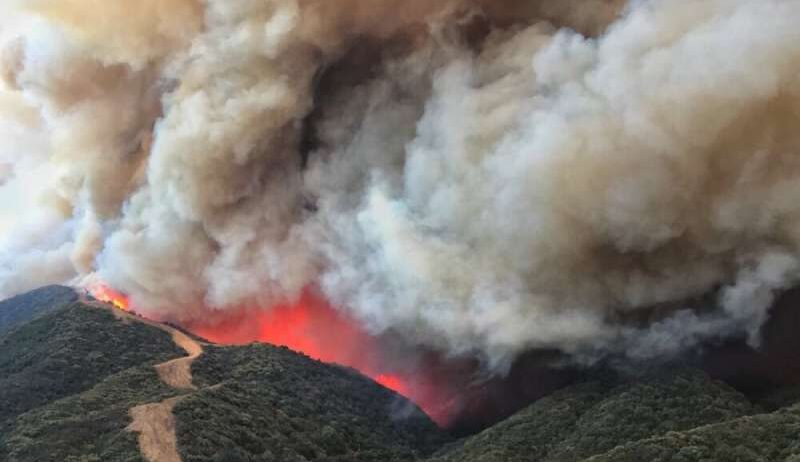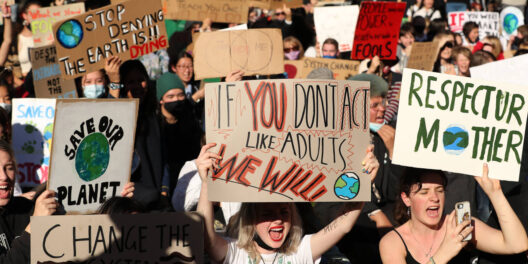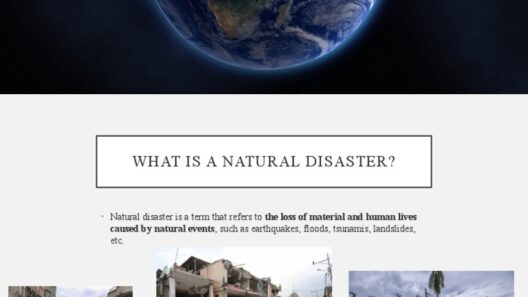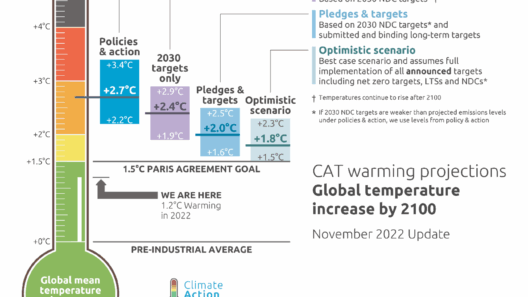Climate change remains one of the most pressing challenges of our time, intricately woven into the fabric of our environment, society, and economy. While vast narratives often dominate discussions—focusing on global trends and temperature rises—there is an urgent need to zoom in on the regional and specific impacts that differ markedly among various locales. Understanding these localized effects can offer profound insights into how anthropogenic activities continue to reshape our planet.
At the heart of the discourse surrounding regional impacts lies the concept of anthropogenic activities—human actions that contribute to climate change. These activities encompass a myriad of practices including industrial emissions, deforestation, agricultural practices, and urbanization. Each of these elements not only contributes to greenhouse gas emissions but also alters ecological balance, thereby producing specific and often unexpected consequences at a regional level.
For instance, consider the implications of industrialization. In densely populated urban areas, increased manufacturing and energy production, predominantly derived from fossil fuels, amplify carbon emissions. This leads to a phenomenon known as urban heat islands, where cities experience significantly higher temperatures than their rural surroundings. The resultant heat not only exacerbates energy consumption for cooling but also adversely affects human health and biodiversity.
Deforestation is another anthropogenic activity that yields localized ramifications. Regions that experience extensive tree removal face altered water cycles, diminished soil fertility, and increased vulnerability to erosion. The Amazon rainforest, often dubbed the “lungs of the Earth,” serves as a pertinent example. Its degradation not only contributes to global carbon emissions but also has sweeping effects on rainfall patterns in surrounding areas, disrupting agricultural practices and endangering local wildlife.
Agricultural practices significantly illustrate the intricate links between human enterprise and ecological health. The widespread use of chemical fertilizers and pesticides, particularly in monoculture farming, leads to soil degradation and water contamination, impacting local water sources and biodiversity. This runoff can cause algal blooms in nearby water bodies, resulting in hypoxic conditions that devastate aquatic ecosystems—a dire warning sign of the failures inherent in unsustainable farming practices.
Moreover, urban sprawl and infrastructure development are catalysts for habitat destruction. As cities expand, natural habitats are fragmented, threatening endemic species and local ecosystems. The construction of roads, buildings, and other infrastructure alters existing natural landscapes, making it increasingly challenging for wildlife to traverse and thrive. This phenomenon drives extinction rates up, reflecting a stark loss of biodiversity in impacted regions.
The dichotomy of climate impacts can also be observed in how different regions adapt to changing conditions. Coastal regions, for instance, face a confluence of challenges including rising sea levels, increased flooding, and saltwater intrusion due to climate change. Coastal erosion can devastate communities and lead to loss of property and livelihood, prompting urgent discussions about adaptation strategies and sustainable development. In stark contrast, arid regions may experience exacerbated droughts, leading to water scarcity and conflict over resource allocation. The lack of adequate water supply affects agricultural viability, particularly in areas reliant on farming for sustenance and economic stability.
Responsive policies must prioritize our understanding of these specific impacts. It is critical to establish frameworks that are responsive to local ecological realities rather than imposing one-size-fits-all solutions. By tailoring mitigation and adaptation strategies to fit the unique characteristics, vulnerabilities, and resilience capacities of each region, stakeholders can create targeted interventions that foster sustainability.
Investments in localized research are indispensable for enhancing our knowledge base. Understanding the specific environmental, social, and economic interactions within a given area is paramount to fostering effective responses to climate change. Citizen science initiatives can empower local communities to document changes in their environment, contributing valuable data that can inform conservation efforts and policy-making.
Moreover, the importance of education cannot be overstated. Engaging communities in discussions about their specific climate challenges can cultivate a collective sense of responsibility, leading to grassroots actions that champion sustainability. Schools can be pivotal in instilling environmental stewardship within younger generations. By nurturing an early awareness of climate issues, curricula can encourage proactive thinking toward local conservation efforts.
Furthermore, harnessing innovative technology can assist in monitoring and mitigating climate impacts. The advent of remote sensing, GIS mapping, and data analytics enables researchers and policymakers to visualize and predict changes in climate patterns with remarkable precision. These tools can illuminate the interconnectedness of human activities and their environmental outcomes, fostering an informed dialogue among stakeholders.
In conclusion, examining the regional and specific impacts of climate change illuminates the complexities inherent in our intertwined relationship with the environment. By shifting our focus from broad, abstract narratives to localized realities, we can better appreciate the nuanced ways in which climate change unfolds. It is within these specificities that we can carve pathways toward solutions that are as diverse and varied as the challenges we face. With concerted efforts, a blend of localized understanding, innovative technology, and a commitment to education, we stand a better chance of ensuring a sustainable future—for both the planet and its diverse inhabitants.








